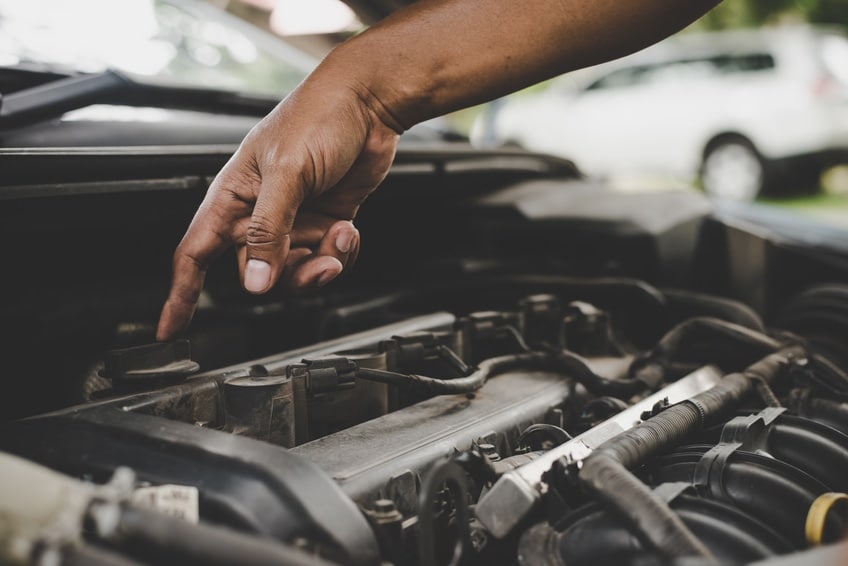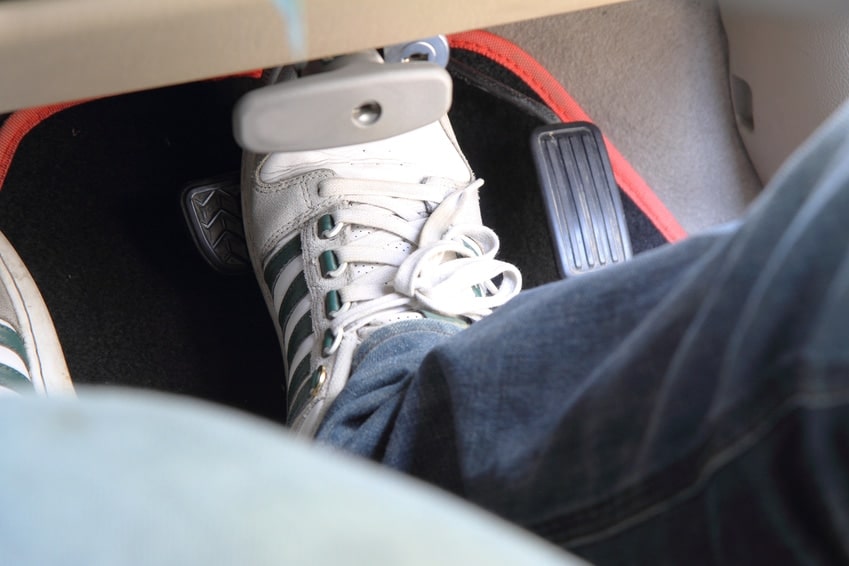Like a lot of illnesses, automobile afflictions can be heard, smelled, seen and felt. We’re here to diagnose some common motor maladies that could affect performance, prescribing quick fixes where we can along the way.
What can you hear?
Keep an ear out for any unusual sounds your car might be making, it could be trying to tell you something.
Ticking
The dreaded ticking sound, for example, is a bit of a weird one. Some cars are designed to have a rhythmic ticking noise occur when in motion. But if it’s more noticeable than usual, then it’s probably ticking away to let you know the engine is on its last legs. Is the sound coming from under the bonnet? You should check your oil level if it is. A low oil level can cause some serious damage to the engine, so check it ASAP. A heavy-duty leak repair will do the trick, letting you carry out repairs at home without an expensive trip to the garage.
Squealing
If you’re hearing a squealing or screeching noise when you turn, then that probably means there’s a problem with your power steering system. Through age and use, the seals that contain the power steering fluid get worn down and start to cause small leaks, which causes these high-pitched noises during turns. A power steering leak stop should fix that right up.
What can you smell?
Odd odours coming from your car may not just be an inconvenience, they could evidence that something is very wrong.
Sweet Smells
If you’re starting to smell a sweet aroma when either the engine has warmed up or after it has shut off for a few minutes, then that’s a cause for concern. Although a lot of drivers say it smells like syrup, the sugary scent is actually a deceptive one.
The coolant in your car contains ethylene glycol. So, while it smells like something you’d drizzle over pancakes, it’s also highly toxic and is likely leaking from a radiator or heater hose. It could be from a failed intake manifold gasket or cylinder head. There’s a chance it’s leaking from the radiator cap, especially if you can smell it from outside the car. The heater core could be causing it as well, which can be a particular problem during the colder months.
So, what can we prescribe? Firstly, since animals are attracted to the smell, it’s probably wise to clear away as much of the coolant as possible before they start snacking. Some products contain Bitrex which will stop them drinking it, but if you’re not sure then you should clean it up quickly.
Leaks from the radiator and other areas such as head gasket can be fixed with certain leak repair products, but you might need to replace parts which can be expensive.
What can you see?
Visual alerts are amongst the easiest indicators to identify, and can sometimes indicate serious issues.
Leaks
Leaks are a common sign of ill-functioning cars, but to determine what kind of liquid is dripping from your car and collecting on the road, we’ll need a sample. It’s a bit of a messy process, especially with all the gunk and grime that’s on the everyday road, but it’s worth it for our diagnosis.
Colour, texture and smell all factor into what is oozing from your car. Engine oil is dark brown, smells gassy and leaves a dark residue behind. Power steering fluid is slightly yellow, of medium thickness and has a mechanical scent to it. Transmission fluid has a deep red colour, is thick and has a smell that’s unlike anything else – but you’ll know when it hits your nostrils.
Once you’ve determined there’s a leak, we’d advise getting it checked out as soon as you can by a professional – leakages can be tricky and dangerous to deal with at the best of times.
Smoke
Smoke is another big visual symptom, and again, its colour can help determine the problem. Clear smoke from the tailpipe isn’t a cause for concern, but any other colour is a sign that something’s wrong.
Blue smoke means oil is leaking from the engine and burning up with fuel. Adding engine oil to the crankcase provides a temporary solution, but we’d advise taking the car in to get any worn or damaged seals seen to if you want it properly fixed.
If you’re seeing black smoke that won’t go after the engine has warmed up, then there’s a chance the air filter is clogged up. These can be easily replaced, but if it keeps happening then it means the air-to-fuel ratio is skewed. The culprit could be a bad fuel pressure regulator or a leaky fuel injector, which will both need to be replaced if you want things fixed.
When your engine gives off white smoke, then it’s a sign that either water condensation or antifreeze has combined with the car’s fuel supply. A coolant/antifreeze top up is a quick fix, but taking it to a mechanic is better in the long run.
How does it feel?
Finally, when you’re driving and something just doesn’t quite feel right, you might have stumbled upon a symptom of a much bigger problem.
Spongy Pedals
Does your brake pedal feel spongy? If it does, it’s a sign that air has gotten into the brake lines, but can also mean failing calipers and wheel cylinders or a weak flex line. If it is a problem with air, then you or a professional will need to ‘bleed’ the brakes to remove the air from the system.
Stiff Turning
If you’re having trouble turning the wheel, then there could be a few problems. We’ve already mentioned low levels of power steering fluid and how that can affect it, but it could also be a sign that the steering belt that connects the drive pulley system to the power steering is old or loose. Low tyre pressure also affects turning, so be sure to keep them filled according to the manufacturer’s recommended PSI.
Car problems can seriously disrupt your day and cost you a lot of time and money. Holts products have been developed to solve your problems quickly and easily so you can get on with your day. For more information, visit the homepage.





